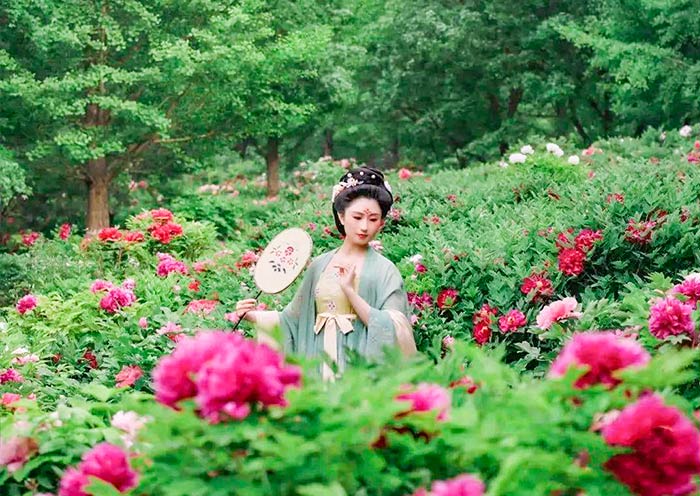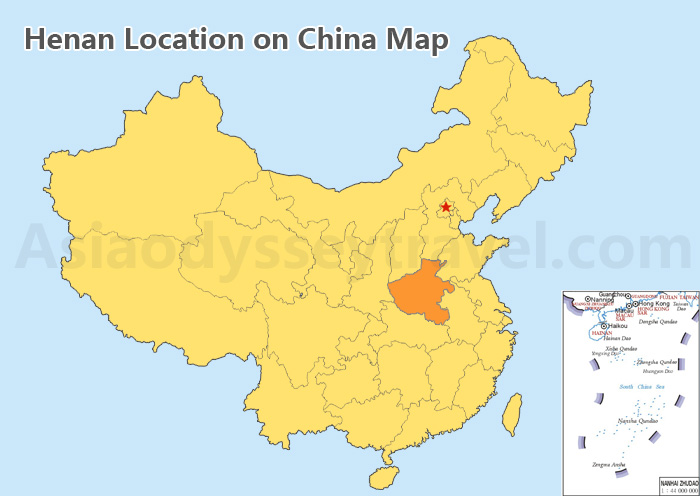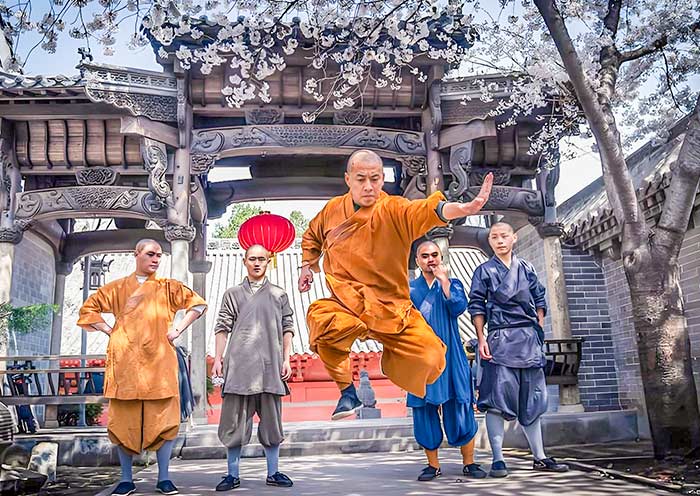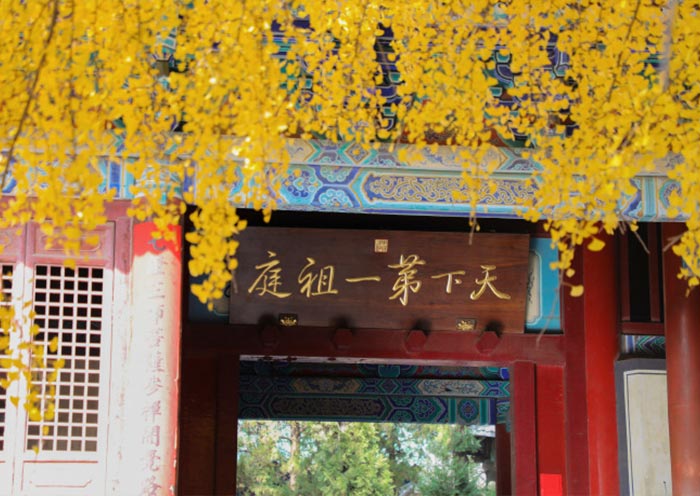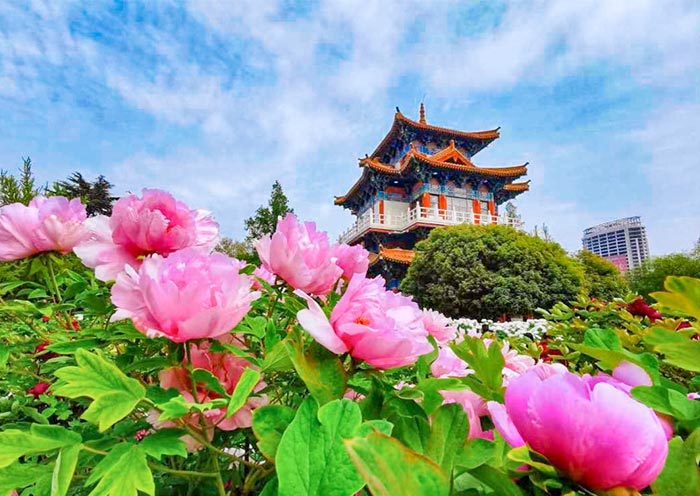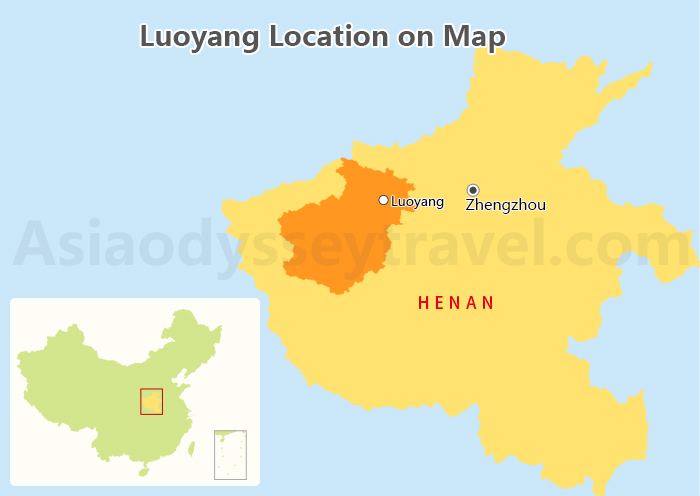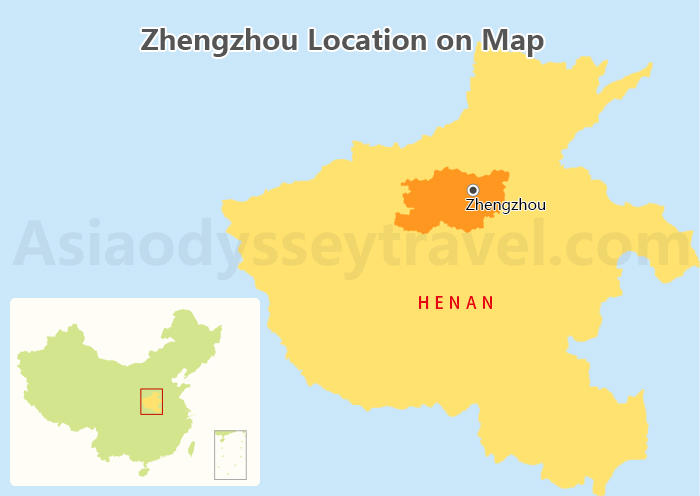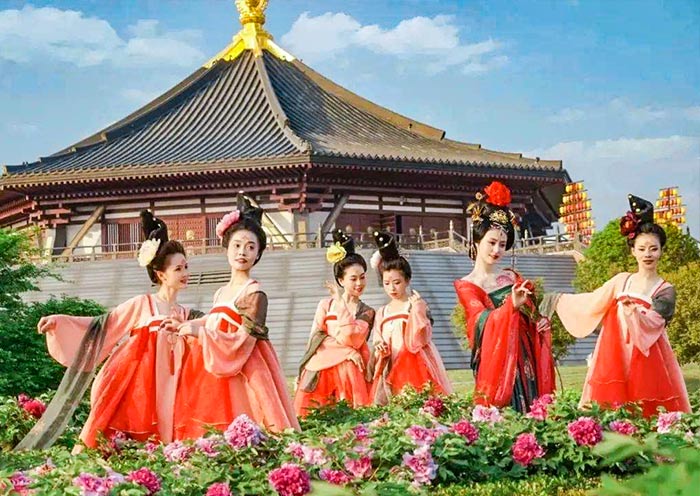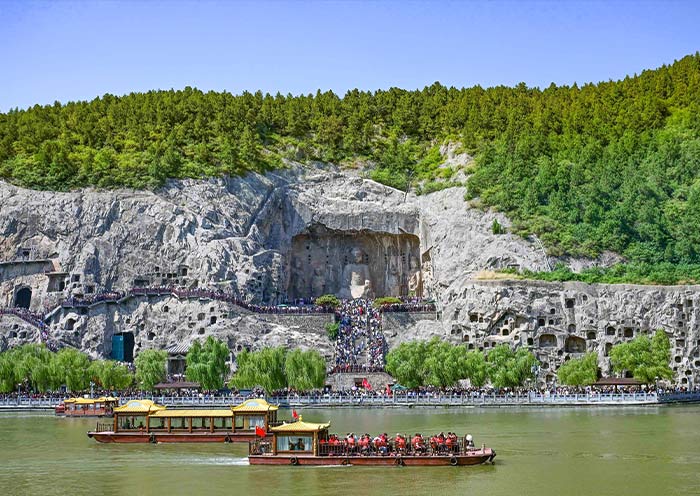Shaolin Temple (少林寺), Dengfeng - Discover the Ancient Art of Kung Fu
Are you curious about the mysterious Chinese Kung Fu? Why not visit Shaolin Temple (Shaolinsi) in Henan, China? Shaolin Temple, nestled amidst the lush forests of Dengfeng, China, is a UNESCO site and a revered pilgrimage site for Buddhists and martial arts enthusiasts worldwide. With roots tracing back over 1,500 years to the Northern Wei Dynasty, the Shaolin Temple is renowned worldwide for its association with the iconic Shaolin Kung Fu. This ancient temple, often referred to as the "cradle of Chinese martial arts," has captivated visitors with its rich history, stunning architecture, and serene atmosphere.
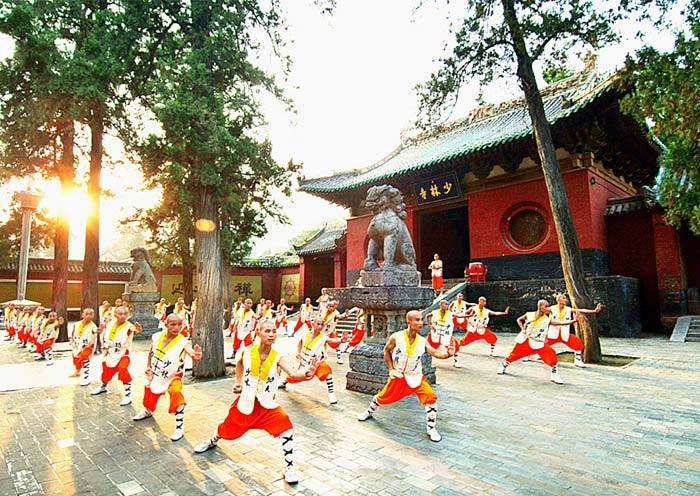
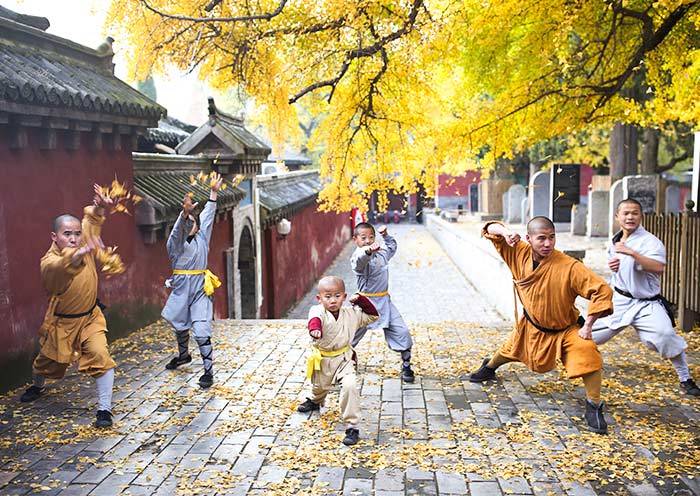
Key Attractions and Experiences:
- Shaolin Kung Fu: Witness awe-inspiring martial arts displays by skilled monks and even learn professional poses and moves, offering a taste of Kung Fu prowess.
- Shaolin Monastery: Delve into the ancient temple complex, marvel at intricate wood carvings and ancient murals, and bask in the serene ambiance that sets Shaolin Temple apart from the rest.
- Pagoda Forest: Explore the peaceful enclave of Shaolin Temple adorned with pagodas, serving as the resting places of revered monks and abbots throughout history, providing a space for contemplation and prayer.
- Meditation Hall: Seek inner peace within the tranquil Meditation Hall, embracing a moment of serenity amidst the hustle and bustle of life.
- Vegetarian Cuisine: Indulge in delectable vegetarian fare crafted by the monks, featuring flavorful herbs and spices that promise a culinary journey unlike any other.
Tips for Your Visit to Shaolin Temple:
- Best Time to Visit: Spring and autumn are the ideal seasons to visit Shaolin Temple, when the weather is pleasant and the crowds are smaller.
- Plan Your Itinerary: Research the various attractions and activities available at the temple to plan your itinerary efficiently with Shaolin Temple Map.
- Wear Comfortable Clothing: Dress modestly and comfortably, especially if you plan to participate in any physical activities.
- Respect the Sacred Site: Remember to maintain silence and reverence within the temple grounds.
- How to Get: You can travel to Shaolin Temple by car from either Luoyang or Zhengzhou. Check more details in Zhengzhou to Shaolin Temple and Luoyang to Shaolin Temple.
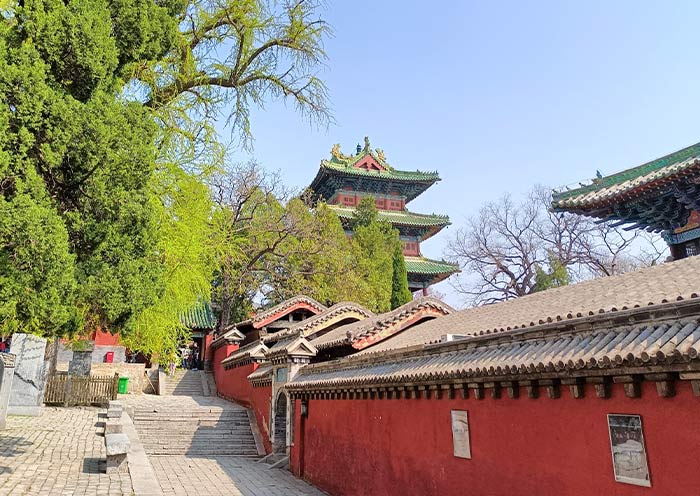
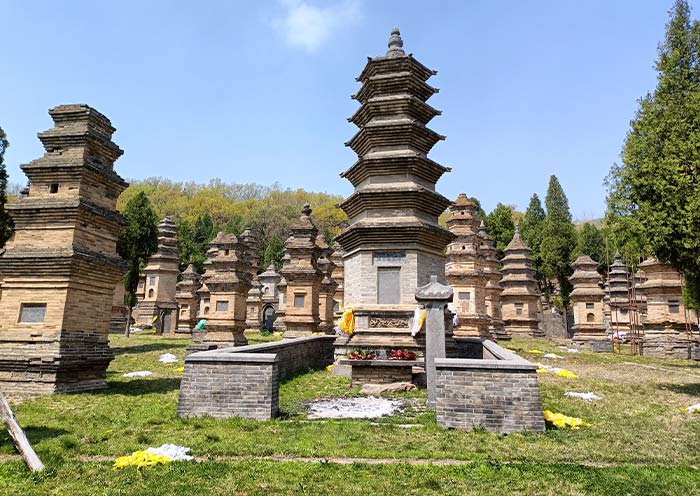
Longmen Grottoes (龙门石窟), Luoyang - Cave Journey Through Time
Nestled along the banks of the Yi River near Luoyang, China, the Longmen Grottoes (龙门石窟) stand as a testament to ancient artistry and spiritual devotion. As you venture into this UNESCO World Heritage site, prepare to be captivated by the intricate beauty and cultural significance etched into the rock faces of these majestic caves.
Dating back over 1,500 years to the Northern Wei Dynasty, the Longmen Grottoes boast thousands of exquisite statues and carvings dedicated to Buddhism. Wander through the labyrinthine corridors and marvel at the craftsmanship that adorns these sacred caves, each telling a story of faith and artistic mastery. Unlike other grottoes in China, the Buddha statues in Longmen Grottoes are more round and plump.
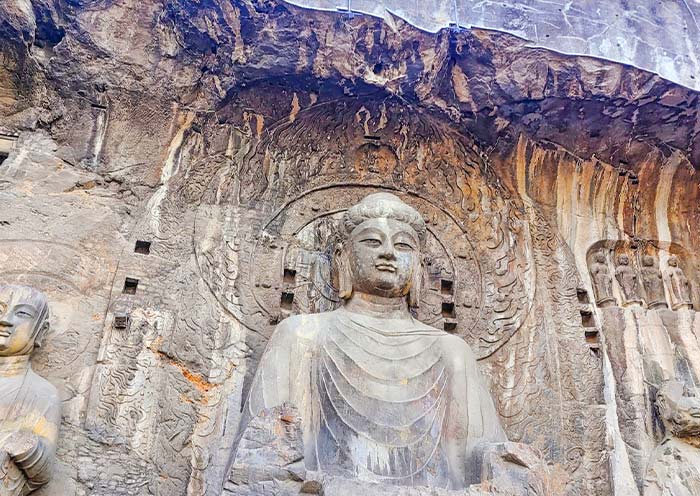
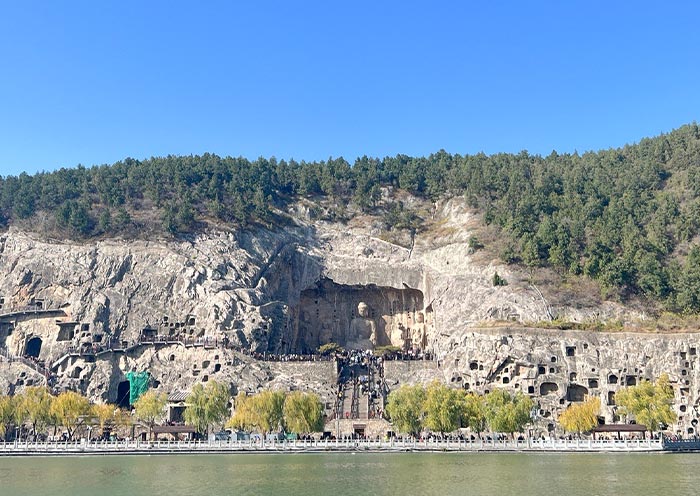
Key Attractions and Experiences:
- Fengxian Temple: Admire the colossal statue of the Vairocana Buddha, the centerpiece of the grottoes, surrounded by smaller figures representing bodhisattvas and disciples.
- Binyang Caves: Among the most representative royal caves of the Northern Wei period, Bingyang caves were constructed by emperors as prayer caves for their parents. They were finished in the late Tang Dynasty.
- Guyang Cave: Discover a diverse collection of Buddhist sculptures, including Bodhisattvas, Buddhas, and guardian deities.
- Water Mill Cave: Marvel at the unique water mill mechanism carved into the cliff face, once used to grind grains for offerings.
Tips for Your Visit to Longmen Grottoes:
- Best Time to Visit: Spring and autumn are the ideal seasons to visit the Longmen Grottoes, when the weather is pleasant and the crowds are smaller.
- Wear Comfortable Shoes: The grottoes are spread over a large area, so comfortable footwear is essential for exploring the site.
- Bring a Hat and Sunscreen: Protect yourself from the sun, especially during the summer months.
- Respect the Historical Site: Refrain from touching the statues and inscriptions to preserve their delicate details.
- Consider a Guide Tour: Consider hiring a knowledgeable guide to learn more about the history, culture, and artistic significance of the grottoes. Contact us for a day-trip from Luoyang.
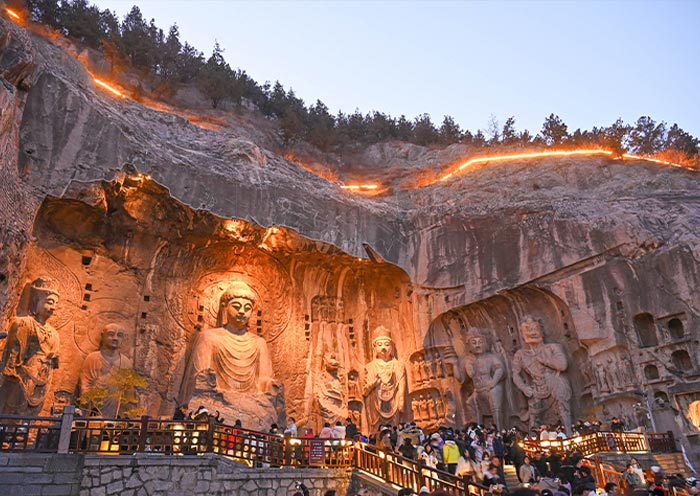
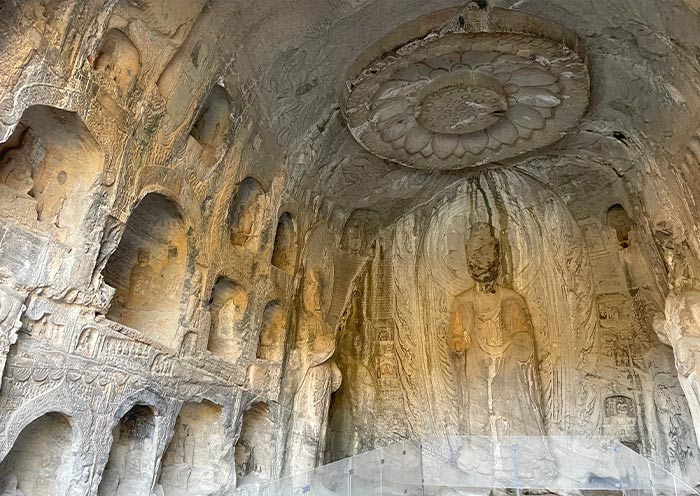
White Horse Temple (白马寺), Luoyang - Unveiling China's Oldest Buddhist Temple
Nestled in the serene outskirts of Luoyang, China, lies the illustrious White Horse Temple (白马寺), a revered sanctuary embodying centuries of spiritual significance and cultural heritage. Founded in the Eastern Han Dynasty over 2,000 years ago, the White Horse Temple stands as China's oldest Buddhist temple, a testament to the enduring legacy of Buddhism in the region. Legend has it that two emissaries traveled to India on white horses to bring back Buddhist scriptures, leading to the temple's establishment upon their return.
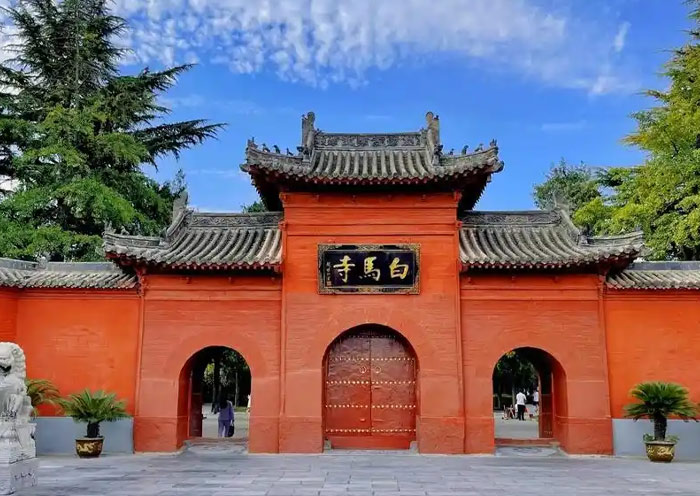
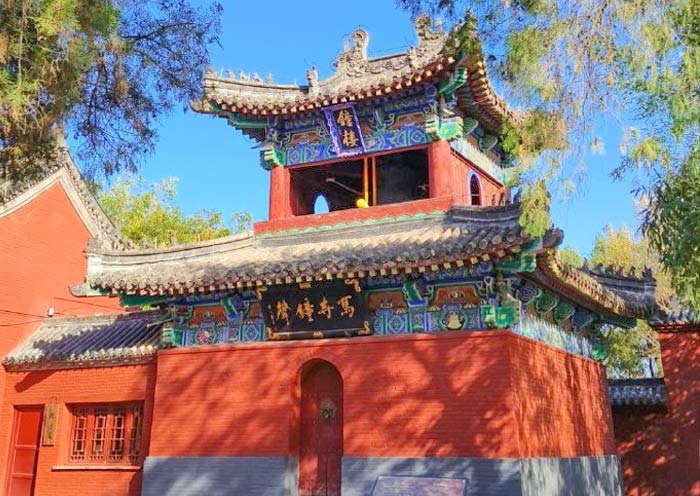
Key Attractions and Experiences:
- Qiyun Pagoda: This ancient pagoda is believed to be the first pagoda built in China.
- Great Buddha Hall: This hall houses a majestic statue of Sakyamuni Buddha.
- Main Hall: This is the heart of the temple, where you can admire beautiful Buddhist statues and paintings.
- Cool and Clear Terrace: This was the first place in China where Buddhist scriptures were translated.
- International Zone: This area features temples from Thailand, India, and Myanmar, showcasing the global influence of Buddhism.
- Beautiful Gardens: The temple grounds are home to serene gardens with ponds, bridges, and ancient trees.
Tips for Your Visit to White Horse Temple
- Best Time to Visit: Spring and autumn are the ideal seasons to visit the White Horse Temple, when the weather is pleasant.
- Wear Comfortable Clothing: Dress modestly and comfortably, especially when entering the temple's sacred halls.
- Respect the Sacred Site: Maintain silence and avoid loud noises within the temple grounds.
- Hire a Guide: Consider hiring a knowledgeable guide to learn more about the history and cultural significance of the temple.
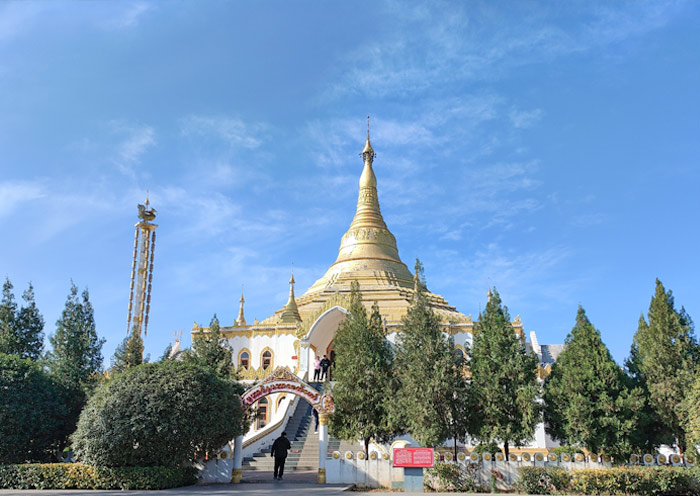
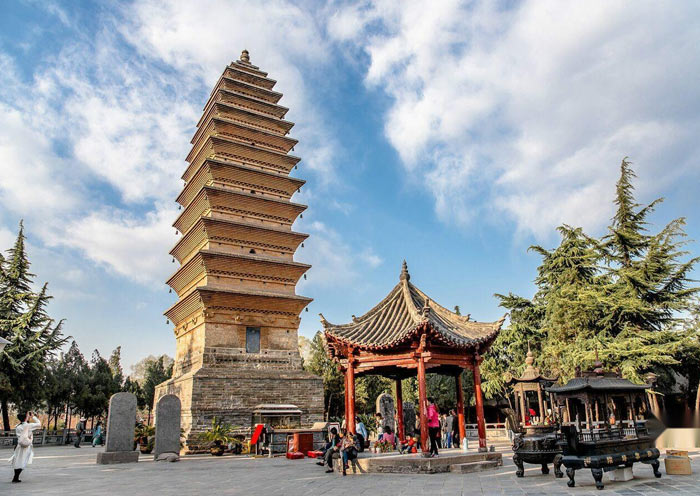
Luoyang Museum (洛阳博物馆), Luoyang - Witness Rich History of Luoyang
As one of the oldest cities in China and a former capital of several dynasties, Luoyang boasts a wealth of historical treasures, and the Luoyang Museum is the perfect place to uncover them.
With a legacy spanning over 5,000 years, Luoyang Museum serves as a testament to the city's significance as a cradle of civilization. Housing a vast collection of more than 400,000 artifacts, the museum showcases a diverse array of relics including ancient pottery, bronze ware, jade carvings, and the famed Tang Dynasty tri-colored glazed ceramics (唐三彩) that have brought Luoyang global renown.
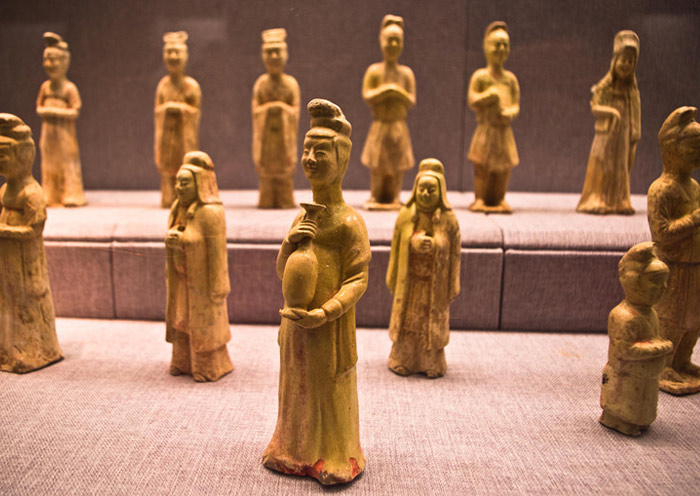
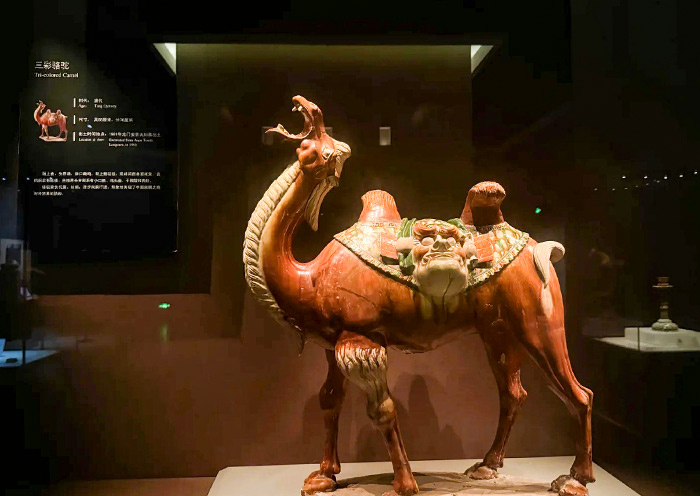
Tips for Your Visit to Luoyang Museum
- Best Time to Visit: The museum is open year-round, but consider visiting during weekdays to avoid crowds.
- Wear Comfortable Shoes: The museum is quite large, so comfortable footwear is essential for exploring the exhibits.
- Hire an Audio Guide: An audio guide can provide detailed explanations of the exhibits and enhance your understanding of the history and culture.
- Take Your Time: Allow plenty of time to explore the museum's vast collection and appreciate the intricate details of the artifacts.
- Respect the Artifacts: Refrain from touching the exhibits and follow the museum's guidelines to preserve the artifacts for future generations.
Millennium City Park (清明上河园), Kaifeng - Exploring History and Tranquility
Step into a living masterpiece of ancient Chinese art and culture at the Millennium City Park (清明上河园) in Kaifeng, China, where the renowned Qingming Riverside Painting comes to life. Embark on a journey through time as you explore this meticulously recreated park, offering a glimpse into the vibrant scenes and traditions of ancient Kaifeng.
Inspired by the famous "Along the River During the Qingming Festival" painting, the Millennium City Park is a treasure trove of historical architecture, bustling market streets, and traditional performances. Marvel at the intricate details that capture the essence of daily life in ancient China during the Song Dynasty.
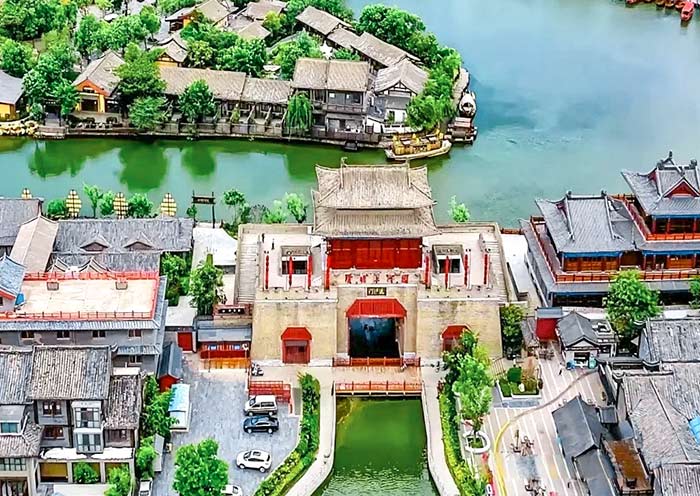
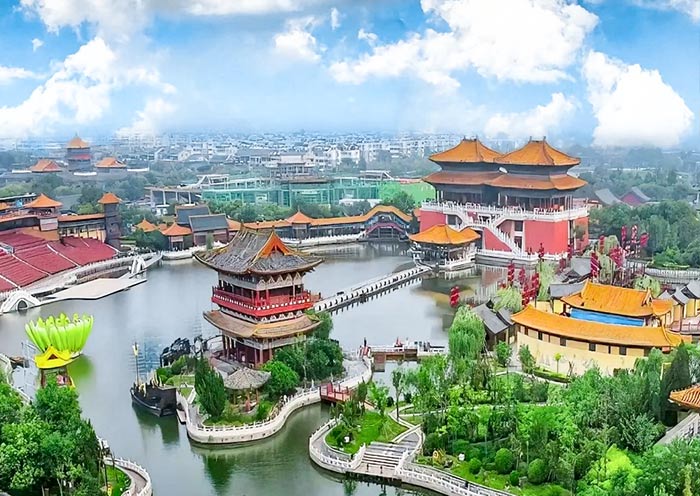
Key Attractions and Experiences:
- Ancient City Streets: Wander through the narrow, winding streets lined with traditional shops, tea houses, and restaurants, immersing yourself in the atmosphere of ancient China.
- Grand Canal: Take a boat ride along the Grand Canal, admiring the stunning scenery and ancient architecture.
- Cultural Performances: Enjoy a variety of traditional Chinese performances, including acrobatics, music, and dance.
- Interactive Experiences: Participate in traditional crafts, such as paper cutting and calligraphy, or try your hand at archery.
- Nighttime Spectacle: Witness the park come alive at night with stunning light shows and performances.
Tips for Your Visit to Millennium City Park
- Best Time to Visit: Spring and autumn are the ideal seasons to visit the Millennium City Park, when the weather is pleasant and the crowds are smaller.
- Wear Comfortable Shoes: The park is quite large, so comfortable footwear is essential for exploring the various attractions.
- Plan Your Itinerary: Research the park's attractions and performances to plan your visit efficiently.
- Try Local Cuisine: Sample delicious local delicacies, such as Hu spicy soup and braised noodles.
- Capture the Moment: Take plenty of photos to capture the beauty and grandeur of the park.
Henan Museum (河南博物院), Zhengzhou - Tracing 5000-Year-Old Chinese History
The Henan Museum (河南博物院), located in Zhengzhou, is a gateway to the rich history and culture of China’s Henan Province, often called the "Cradle of Chinese Civilization." As one of the country’s oldest and most prestigious museums, it offers visitors a chance to explore a vast collection of artifacts that span over 5,000 years of history. From ancient pottery and jade carvings to exquisite bronzes and relics of the Shang and Zhou dynasties, the 4-floor museum provides a comprehensive insight into China's early civilizations.
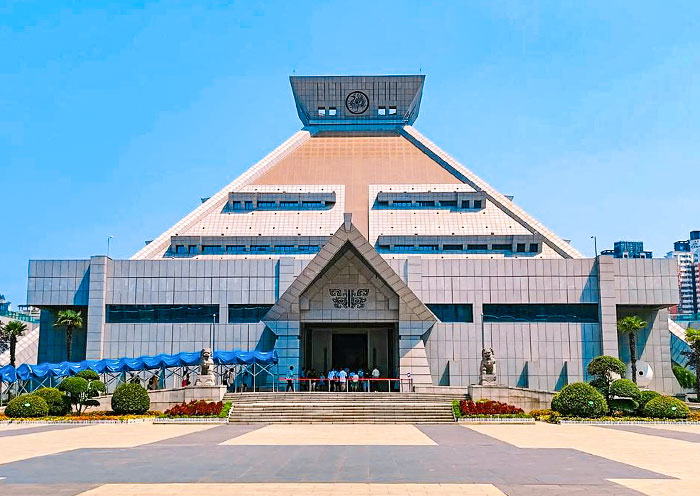
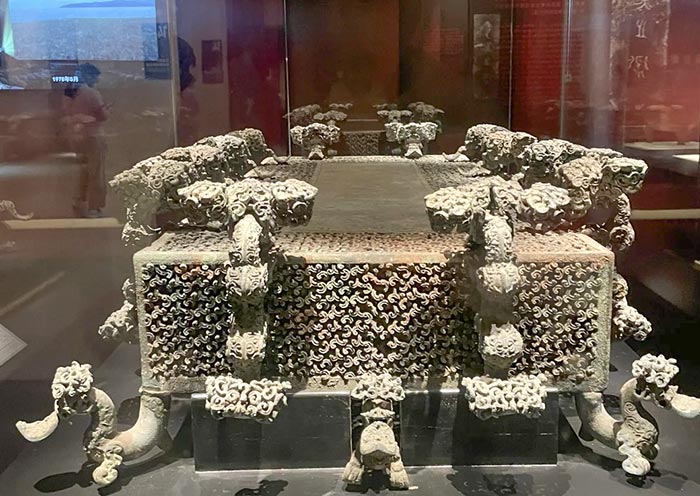
9 Treasures of the Henan Museum
- Jiahu Bone Flute (贾湖骨笛): Hailed as the "First Flute of China," this is a Neolithic musical instrument (c. 10,000 - 2000 BCE). (Floor 1, Exhibition Hall 1)
- Fu Hao Owl Zun (妇好鸮尊): A late Shang Dynasty (c. 1600 - 1046 BCE) wine vessel with a unique shape and exquisite craftsmanship. (Floor 1, Exhibition Hall 2)
- Duling Square Ding (杜岭方鼎): An early Shang Dynasty (c. 1600 - 1046 BCE) bronze vessel, one of the largest of its kind, with immense historical and artistic value. (Floor 1, Exhibition Hall 2)
- Jade-Handled Iron Sword (玉柄铁剑): An early Western Zhou Dynasty (c. 1046 - 771 BCE) iron sword that showcases the achievements of early Chinese iron smelting technology. (Floor 1, Exhibition Hall 3)
- Lotus Crane Square Hu (莲鹤方壶): A Spring and Autumn Period (c. 770 - 476 BCE) bronze wine vessel with extremely exquisite shape and craftsmanship. (Floor 1, Exhibition Hall 4)
- Four Divine Beasts Cloud Pattern Mural (四神云气图壁画): An early Western Han Dynasty (206 BCE - 9 CE) mural. (Floor 2, Exhibition Hall 5)
- Wu Zetian Gold Slip (武则天金简): A Tang Dynasty (618 - 907 CE) artifact, the only known gold slip of Wu Zetian discovered in China. (Floor 2, Exhibition Hall 7)
- Ru Ware Celestial Blue Glazed Carved Swan-Neck Vase (汝窑天蓝釉刻花鹅颈瓶): A Northern Song Dynasty (960 - 1127 CE) porcelain piece that showcases the superb craftsmanship and skills of Song Dynasty porcelain. (Floor 3, Exhibition Hall 10)
- Cloud Pattern Bronze Enclosure (云纹铜禁): An Eastern Zhou Dynasty (770 - 256 BCE) artifact that showcases ancient bronze casting technology. (Floor 4, Exhibition Hall 13)
Yellow River Scenic Area (黄河风景区), Zhengzhou
The Yellow River Scenic Area, or Yellow River Cultural Park, offers a unique opportunity to witness the raw power and historical significance of the Yellow River, often referred to as the "Mother River" of China. This scenic area, located northwest of Zhengzhou City, showcases the stunning landscapes, rich history, and cultural heritage associated with this iconic river.
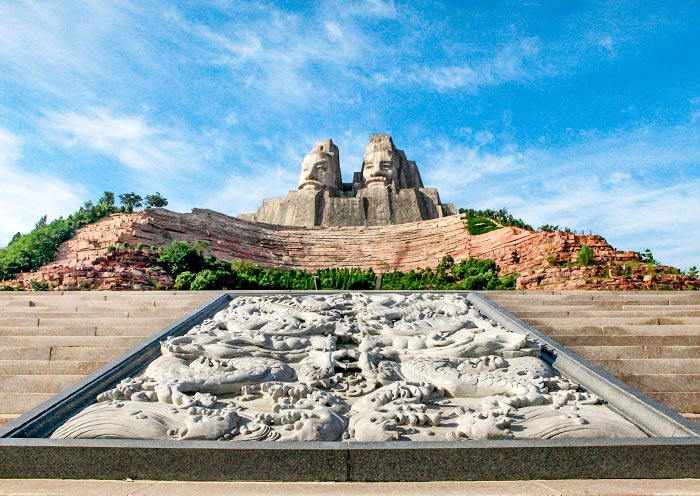
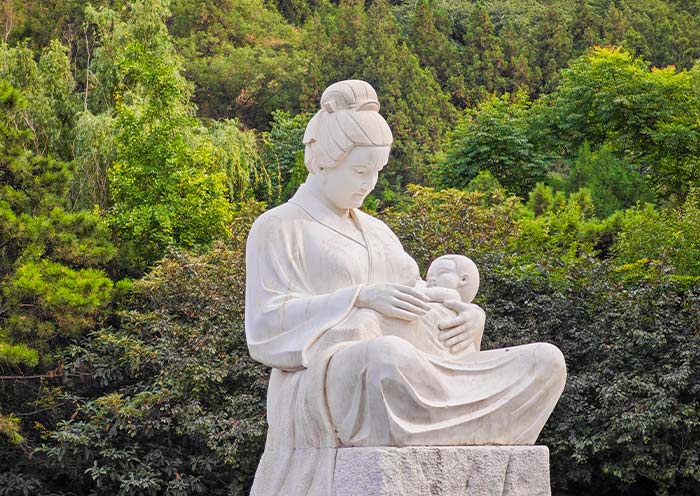
Key Attractions and Experiences:
- Yan Huang Square: This expansive square features statues of the legendary Chinese emperors Yandi and Huangdi, revered as the ancestors of the Chinese people.
- Yellow River Geological Museum: Explore the geological wonders of the Yellow River basin and learn about its formation and impact on Chinese civilization.
- Panoramic River Views: Take a cable car to Dayu Mountain to admire the stunning panoramic views of the Yellow River, particularly during sunset or sunrise.
- Riverside Promenade: Take a leisurely stroll along the riverbank, admiring the scenic views of Yellow River and the tranquil atmosphere.
The Yellow River Scenic Area is more than just a natural wonder; it's a cultural and historical landmark that has shaped the course of Chinese civilization. By visiting this scenic area, you can gain a deeper appreciation for the significance of the Yellow River and its enduring legacy.
Yin Ruins (殷墟) & Yinxu Museum, Anyang - Unearthing the Secrets of the Shang Dynasty
Located in Anyang, Henan Province, the Yin Ruins (殷墟) are one of China's most significant archaeological sites and a UNESCO World Heritage Site. As the ancient capital of the Shang Dynasty (1600–1046 BCE), Yin Ruins offer an incredible glimpse into early Chinese civilization, making it a must-visit destination for history enthusiasts and curious travelers.
Yin Ruins - Echoes of the Past
The Yin Ruins are the site of the last capital of the Shang Dynasty, where significant cultural and political advancements were made. The archaeological site features ancient palace foundations, royal tombs, and the world-famous Oracle Bone Inscriptions (甲骨文)—the earliest known Chinese writing. Strolling through the archaeological site, you can explore the remnants of royal palaces, ancestral temples, and burial sites, including Fu Hao's tomb (妇好墓)—an extraordinary discovery of a female military leader and priestess.
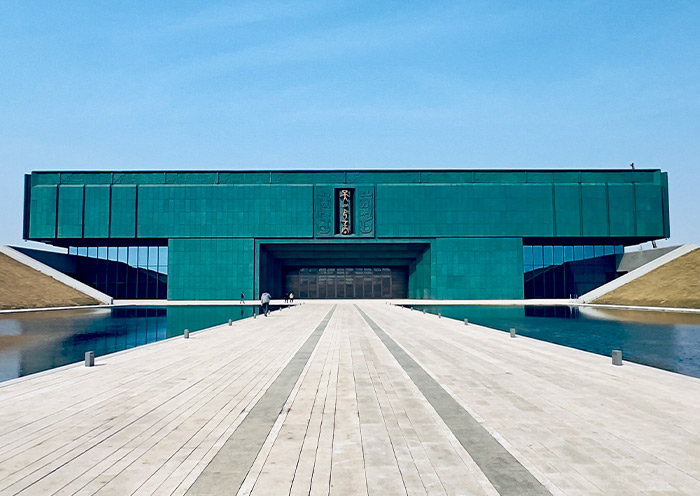
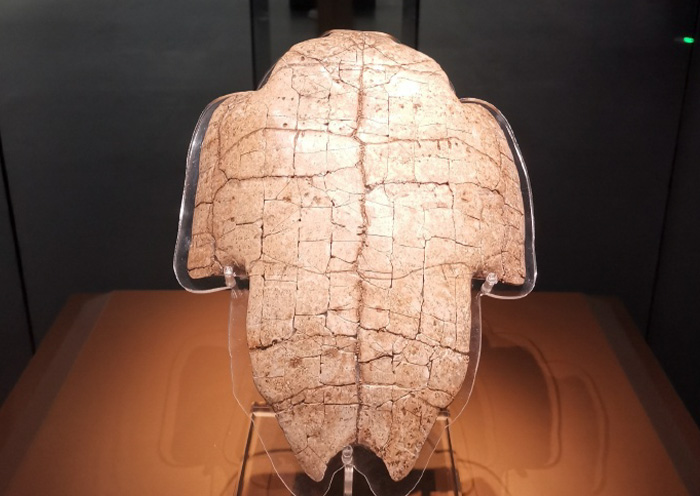
Yinxu Museum - Gateway to Antiquity
The Yinxu Museum opened in Feb. 2024, located adjacent to the ruins, serves as the perfect gateway to understanding the site's historical significance. Its meticulously curated exhibits showcase a wealth of artifacts, including oracle bones inscribed with the earliest known Chinese writing, elaborate bronze vessels, jade ornaments, and ceremonial relics. Each artifact tells a story of the Shang Dynasty’s advanced craftsmanship, spiritual beliefs, and governance.
For travelers seeking a deeper connection to ancient history, the Yin Ruins and Yinxu Museum provide an unparalleled experience. Their profound cultural and historical significance ensures Anyang remains a must-visit destination for those intrigued by China’s rich heritage.
Experience the Splendor of History at Kaifeng Fu (开封府)
Located in the historic city of Kaifeng, Henan Province, Kaifeng Fu (开封府) is a remarkable attraction that transports visitors to the glory of the Northern Song Dynasty (960 - 1279). As the former administrative headquarters of Kaifeng, this grand complex is a symbol of ancient Chinese governance, culture, and architectural excellence.
Kaifeng Fu is a meticulously reconstructed site that echoes the splendor of its past. Entering the compound, visitors are greeted by majestic gates, elegant halls, and tranquil courtyards. The site vividly recreates the administrative and judicial activities of the era, making it a living museum of Song Dynasty governance.
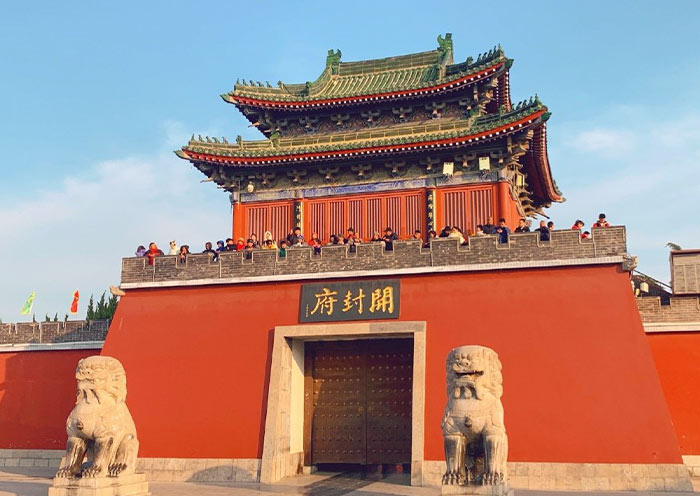
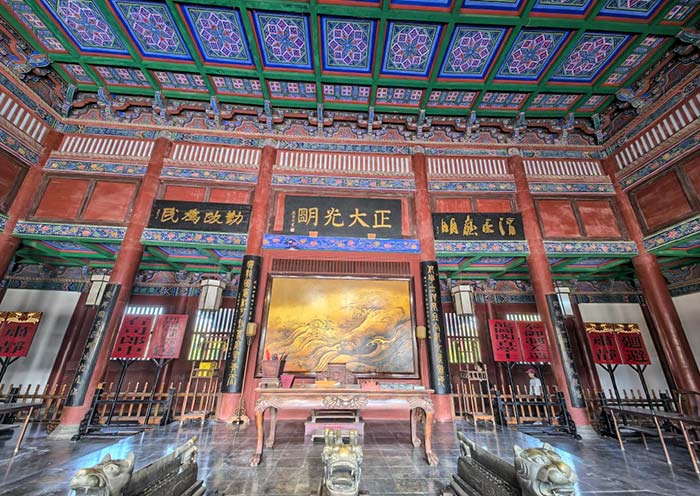
A highlight of the experience is the daily theatrical reenactments of court trials and traditional ceremonies, offering a glimpse into the justice system and social life of ancient Kaifeng. Additionally, visitors can explore exhibits of historical artifacts, calligraphy, and paintings that reveal the city's cultural legacy.
Discover the Origins of Language at the Chinese Character Museum (中国文字博物馆) in Anyang
Nestled in Anyang, Henan Province, the Chinese Character Museum (中国文字博物馆) is a one-of-a-kind destination dedicated to the origins and evolution of Chinese writing. The museum, a modern architectural marvel, offers a journey through the history of Chinese characters, spanning over 5,000 years. As the birthplace of Oracle Bone Inscriptions (甲骨文)—the earliest known Chinese characters—Anyang is the perfect location for this fascinating museum, making it a must-visit for language and culture enthusiasts.
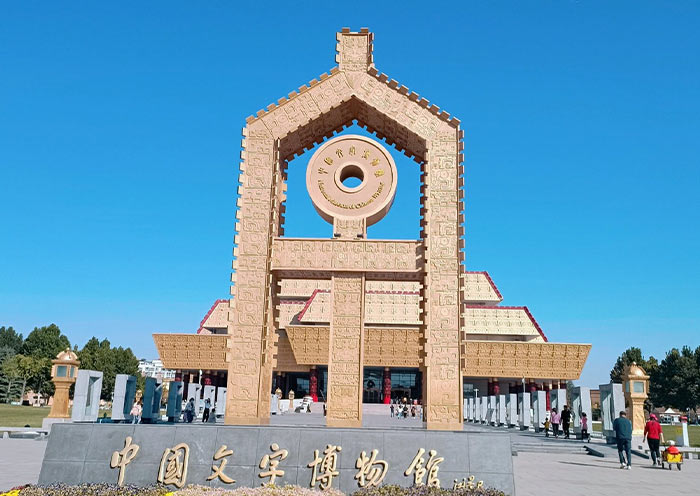
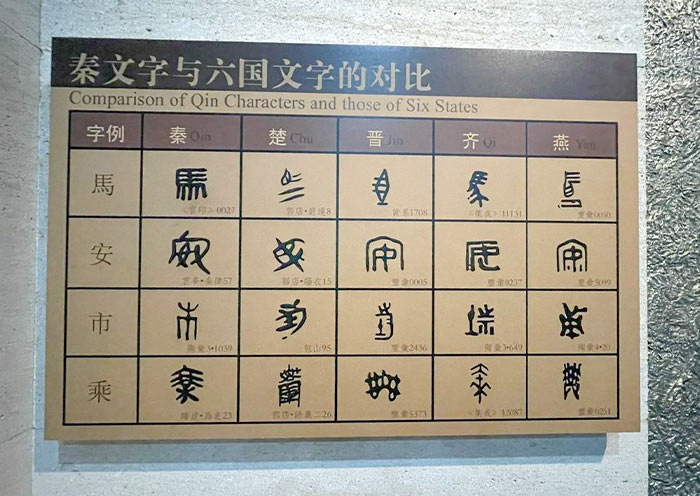
What to See at the Museum
- Oracle Bone Inscriptions: Explore the museum's extensive collection of oracle bones, which provide invaluable insights into the Shang Dynasty and the origins of Chinese writing.
- Evolution of Chinese Characters: Discover the fascinating journey of Chinese characters from their earliest forms to the modern script we use today.
- Interactive Exhibits: Engage with interactive exhibits that allow visitors to learn about the creation and evolution of Chinese characters in a fun and educational way.
- Calligraphy Demonstrations: Witness the artistry of Chinese calligraphy as skilled calligraphers create beautiful works of art using traditional brushes and ink.
Tips for Your Visit:
- Best Time to Visit: Weekdays are generally less crowded than weekends.
- Wear Comfortable Shoes: The museum is quite large, so comfortable footwear is essential for exploring the exhibits.
- Learn a Few Characters: Try to learn a few basic Chinese characters before your visit to enhance your appreciation for the exhibits.
Step Back in Time at Luoyang Old Town (洛阳古镇)
Located in the heart of Luoyang, Henan Province, Luoyang Old Town (洛阳古镇) is a treasure trove of history, culture, and charm. As one of China’s ancient capitals and a cradle of Chinese civilization, Luoyang is steeped in over 4,000 years of history. The Old Town preserves this rich heritage with its well-preserved architecture, vibrant streets, and cultural landmarks.
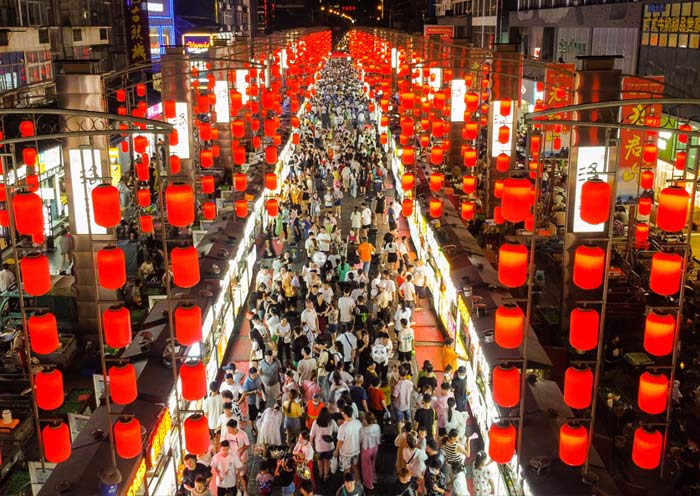
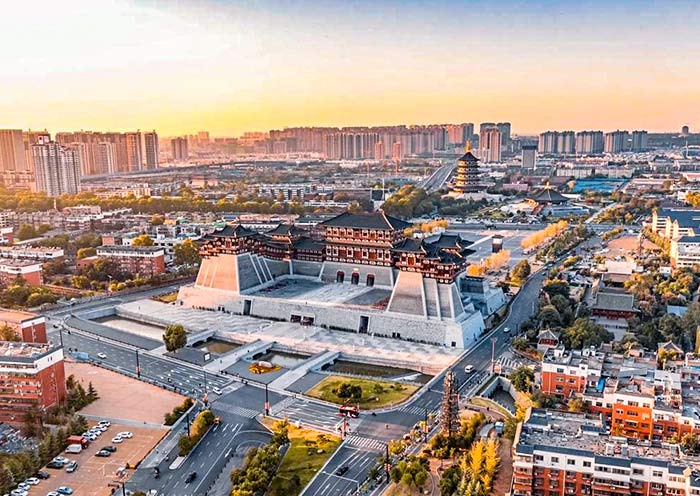
Walking through Luoyang Old Town feels like stepping back in time. The narrow, cobbled lanes are lined with traditional courtyards, teahouses, and shops selling local handicrafts and delicacies. Visitors can explore historic landmarks such as the Lijing Gate, which once served as the city’s main entrance and a symbol of its prominence.
Food lovers will delight in sampling authentic Luoyang snacks, such as water banquet dishes, handmade noodles, and fragrant dumplings. The Old Town also hosts regular cultural performances, including shadow puppetry and traditional music, adding to the lively atmosphere.
By day, Luoyang Old Town is a living museum of Chinese history; by night, it transforms into a magical scene of glowing lanterns and bustling night markets. A visit to this enchanting area offers a perfect blend of history, culture, and local flavor for every traveler.
Discover the Timeless Beauty of Dragon Pavilion Park (龙亭公园) in Kaifeng
Nestled in the heart of Kaifeng, just adjacent to the west of Qingming Riverside Park, Dragon Pavilion Park (龙庭公园) is a must-visit destination for travelers seeking a blend of history, culture, and natural beauty. This iconic park, centered around the grand Dragon Pavilion, offers a glimpse into the grandeur of the Northern Song Dynasty, which made Kaifeng its capital over a thousand years ago.
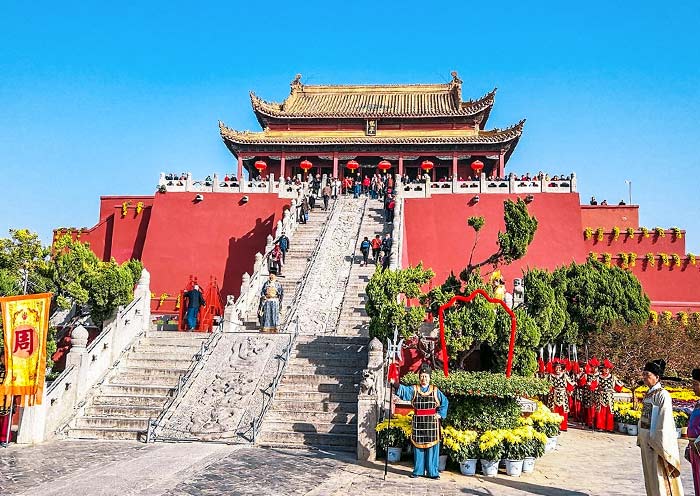
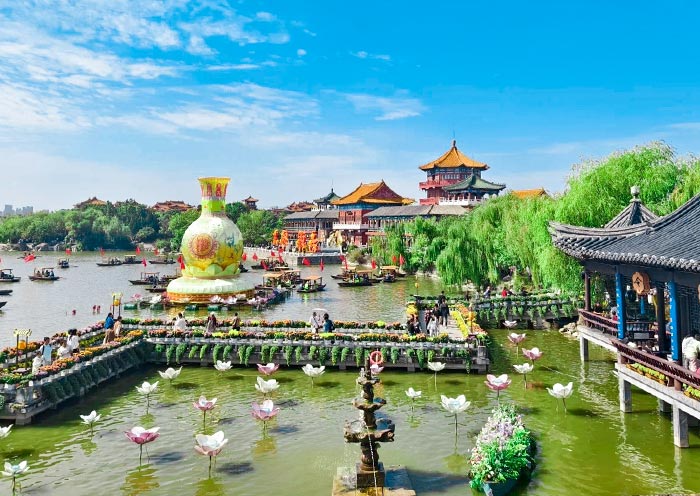
The Dragon Pavilion itself is an architectural marvel, perched atop a 13-meter-high platform. With its traditional Chinese design, intricate details, and commanding view of the surrounding area, it was once the site of imperial ceremonies. Today, it serves as a symbol of Kaifeng’s rich cultural heritage. Visitors can explore the pavilion's halls, which house historical artifacts and exhibitions that tell the story of the city’s illustrious past.
Beyond the pavilion, the park’s serene gardens, meandering pathways, and tranquil lakes provide a peaceful retreat. Seasonal festivals, such as the famous Kaifeng Chrysanthemum Festival, bring the park to life with vibrant colors and cultural performances.
Songshan Mountain (嵩山): A Journey Through Nature and History in Dengfeng
Located in Dengfeng, Henan Province, Songshan Mountain (嵩山) is a stunning and culturally rich destination. Known as one of China’s Five Great Mountains, it has long been a center of Taoism, Buddhism, and Confucianism, earning it the nickname "Central Sacred Mountain." With 72 majestic peaks spread across its two main sections, Taishi Mountain and Shaoshi Mountain, Songshan is a harmonious blend of natural beauty and historical significance.
Things to Do in Songshan Mountain:
Hiking to the Peaks of Shaoshi Mountain and Taishi Mountain
Songshan is a paradise for nature enthusiasts, offering dramatic peaks, lush valleys, and tranquil streams. Hiking trails wind through breathtaking landscapes, leading to awe-inspiring vistas and ancient structures that dot the mountain.
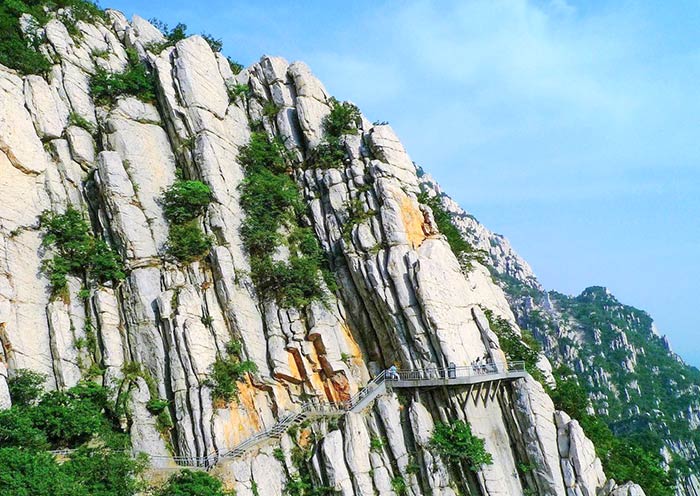
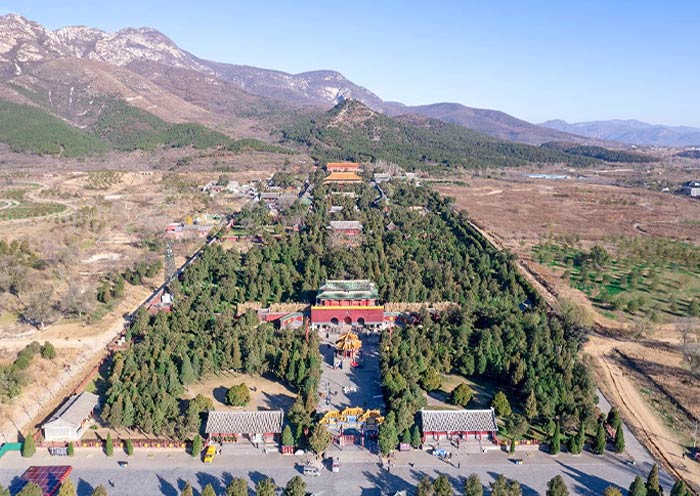
Explore the UNESCO Heritage Sites
The mountain is home to the Historic Monuments of Dengfeng, a UNESCO World Heritage Site comprising ancient structures scattered under its peaks. Highlights including:
- Shaolin Temple (少林寺):The birthplace of Zen Buddhism and Shaolin Kung Fu
- Songyang Academy (嵩阳书院): One of the oldest higher education institutions in China, it played a pivotal role in the development of Confucianism.
- Dengfeng Observatory (登封观星台): Established during the Yuan Dynasty, was used for astronomical observations and calendar reforms, reflecting the advanced scientific achievements of ancient China.
- Zhongyue Temple (中岳庙): Dedicated to the God of Mount Songshan, this is one of China’s oldest Taoist temples.
- Three Han Que gates (汉三阙): Taishi Que, Shaoshi Que, and Qimu Que are Han dynasty gate architecture, among the earliest surviving examples of Chinese ceremonial gateways
Explore the Majestic Guoliang Village (郭亮村) in Xinxiang
Tucked away in the rugged mountains of Xinxiang, Henan Province, Guoliang Village (郭亮村) is a hidden gem that offers a unique blend of natural beauty and human ingenuity. Famous for its stunning cliffside location and dramatic landscapes, Guoliang Village has become a popular destination for adventurous travelers seeking both history and breathtaking views.
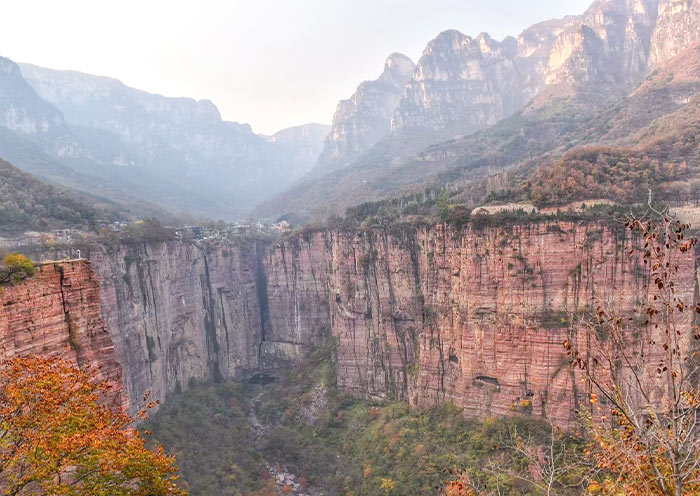
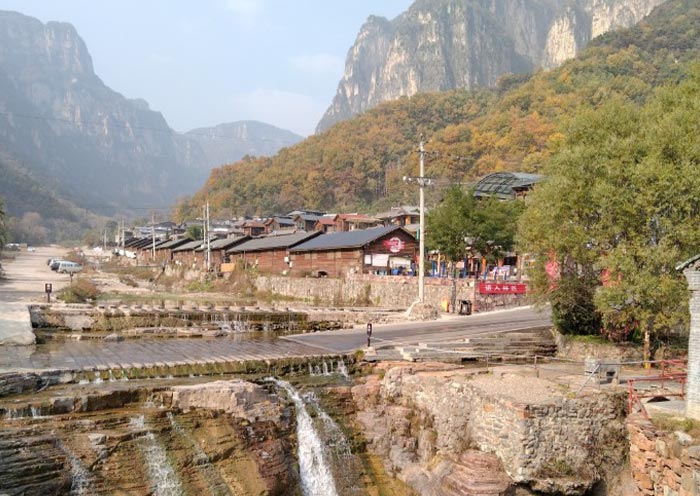
The village is renowned for the Guoliang Tunnel, a remarkable feat of engineering carved through a mountain. Originally created by local villagers in the 1970s to connect their isolated community with the outside world, the tunnel is now a thrilling attraction. Visitors can walk or drive through the tunnel, which is carved into the sheer rock face, offering incredible views of the valley below.
Beyond the tunnel, Guoliang Village is surrounded by steep cliffs, lush greenery, and peaceful landscapes, making it a perfect destination for hiking and photography. The village itself retains its traditional charm, with ancient houses and narrow streets adding to its allure.
6-Day Henan Itinerary to Visit Top Attractions in Henan
Day 1: Zhengzhou Arrival and City Exploration
Arrive in Zhengzhou, the capital of Henan Province. Start your exploration by visiting the Henan Museum. Then explore the city’s vibrant streets and enjoy local cuisine like Henan-style dumplings.
Day 2: Zhengzhou to Anyang, Anyang City Exploration
Travel to Anyang, a city rich in ancient history. Visit the Yin Ruins and Yinxu Museum. Explore the Chinese Character Museum to learn about China's early written language. In the evening, take a walk around the local area, enjoying the atmosphere of this historical city.
Day 3: Anyang to Kaifeng, Kaifeng Exploration
Depart Anyang for Kaifeng, an ancient city known for its role as a capital during the Northern Song Dynasty. Visit the famous Longting Park, the Iron Pagoda, and the Millennium City Park. Don’t miss the local food, including Kaifeng-style baozi (steamed buns).
Day 4: Kaifeng to Shaolin Temple, then to Luoyang
Travel to the Shaolin Temple, famous for its association with kung fu and Zen Buddhism. Explore the temple complex, including the Pagoda Forest, and witness martial arts demonstrations. Afterward, head to Luoyang, an ancient capital known for its cultural heritage.
Day 5: Luoyang Exploration
In Luoyang, visit the renowned Longmen Grottoes, a UNESCO World Heritage site home to thousands of Buddhist statues. Explore the White Horse Temple, the first Buddhist temple in China, and stroll through the Old Town to experience its traditional charm.
Day 6: Departure from Luoyang
On your final day, you can either explore more of Luoyang, or head towards Xi’an or Beijing for the next leg of your journey.
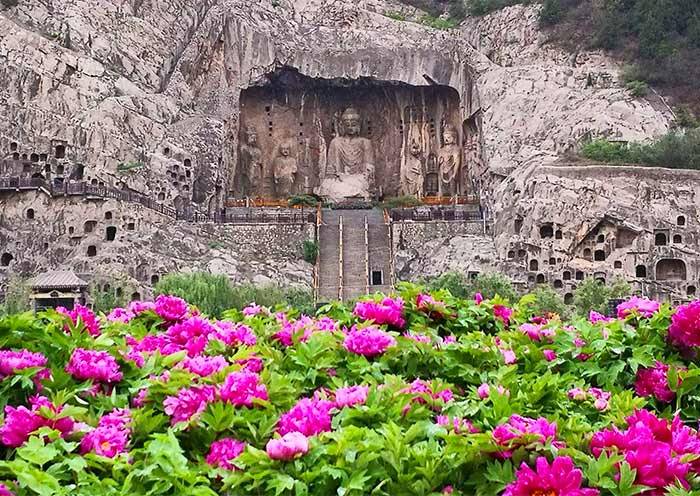
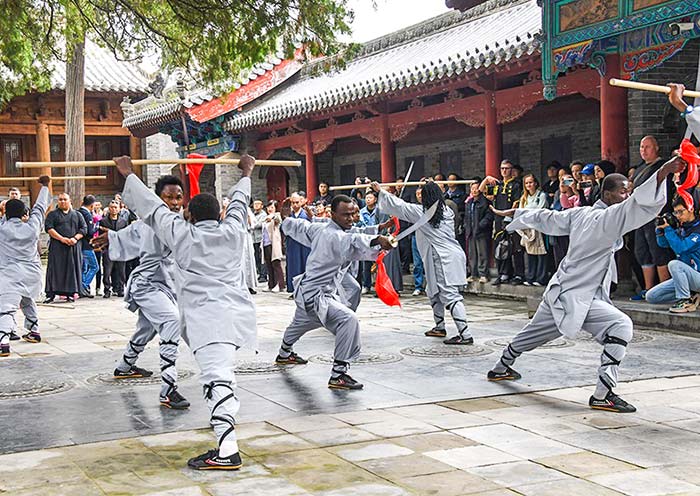
Explore 5000-Year-Old History and Culture in Henan with Asia Odyssey Travel
Asia Odyssey Travel invites you to embark on a captivating journey through Henan, the cradle of China's ancient civilization. With over 5,000 years of history, Henan is home to breathtaking cultural landmarks and stories that shaped China's heritage. As your trusted local travel partner, we offer personalized tours led by professional English-speaking guides to provide in-depth insights into Henan's unparalleled historical and cultural treasures. From the iconic Shaolin Temple to the wonders of Luoyang and Kaifeng, we ensure a memorable and enriching experience tailored to your interests.
- Our Henan Tour Packages Include: Luoyang Tours, Henan Tours, Shaolin Temple Tours, Zhengzhou Tours
- Our meticulously crafted Henan travel maps include: Luoyang Tourist Map, Shaolin Temple Map, Zhengzhou City Map, Henan Province Map
- Our wealthy Henan travel information include: Luoyang Attractions, Henan Attractions, Best Time to Visit Luoyang, Luoyang to Shaolin Tempel, Zhengzhou to Luoyang Temple, Beijing to Luoyang Train, Xian to Luoyang Train
Let Asia Odyssey Travel guide you through Henan's extraordinary legacy, where history and culture come alive. Create unforgettable memories as you uncover the heart of China's ancient civilization with us.
